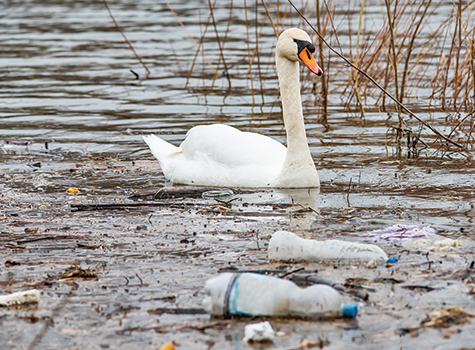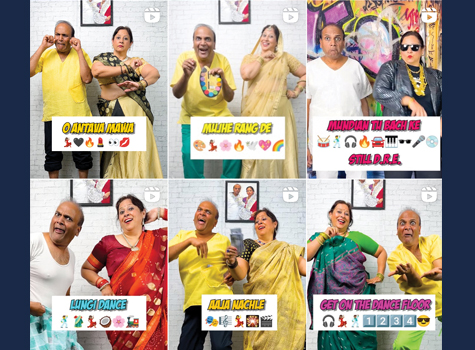
It’s the summer before my first born goes off to college. Our version of spending quality time together is shopping for dorm essentials and debating the definition of “essential.”
My husband and I wanted to give choices to our children from a young age so they could eventually take charge of their own lives, but there was no room for negotiation around health and safety. They understood that their wellbeing should never be compromised. That has not changed but I wonder if we have been willingly, albeit unknowingly, exposing ourselves to dangerous objects daily.
Let’s take vacuum cleaners as an example. I was horrified to see that every handheld vacuum cleaner stocked at a local big box store was stamped with a warning that said the product contained something that could cause cancer or reproductive harm. What’s worse, having a dirty dorm room or a visibly clean room with invisible carcinogens lurking somewhere?
Like most moms, I am the designated problem solver of the family but one who has failed to resolve this dilemma. The first challenge is the prevalence of toxic materials laced in items we use or consume. It could be water, food storage containers, packaging, or even shower drains as we discovered in the process of a recent bathroom remodel. The second obstacle is the lack of information beyond the warning label.
How is the consumer expected to determine the extent of the risk or how the material can cause harm? Is it by touching, inhaling, or something else? With some help from my kids, we were able to identify a brand of vacuum cleaners that does not have toxic materials, but I still haven’t found a replacement for the shower drain.
Frustrated by the situation I had added a few choice expletives, but I decided to filter them out to keep this article clean
It is appalling that materials known to be harmful to humans are permitted to be used in manufacturing products. It would be naïve to think companies and government agencies have the people’s best interests in mind, but if we demand a world with less poison, is it too much to ask?
Naturally occurring toxins such as arsenic in rice, have always been around, but over decades humans have introduced an increasing number of artificially created chemicals that have made their way into everyday products and slowly into water bodies and even human blood streams. Its advantages are highlighted, and hazardous effects are frequently ignored until fatalities occur. Companies profiting from such substances have monetary reasons to stifle inquiries about potential risks to the public and even the most effective and ethical regulators may not know what they are dealing with.
Manufacturers are not required to disclose information that may reveal trade secrets but that also allows them to conceal data affecting the public. ProPublica’s investigative report about 3M is a case in point. Known for its innovative and wildly successful products, I admired the company until I learned about the extensive damage caused by 3M produced PFOS—short for perfluorooctanesulfonic acid also known as a type of forever chemical. Sadly, denial of problems and burying evidence about dangers is not new. Radium was at one time believed to be harmless and even beneficial to humans.
Several individuals died slow and painful deaths before the risk of radium poisoning was brought to light and its use was controlled. What is mindboggling is that some dangers have been unearthed but there may be others that are yet to be discovered.
We continue to swim in lakes dumped with sewage or coal ash, breathe in air with VOCs, eat fish that swallowed plastic, quench our thirst with energy drinks concocted with unknown ingredients, and then wonder why the incidences of cancer are on the rise. I grew up watching my mother wrap naphthalene balls in sarees without realizing that those vapors are harmful.
Often, the average person is unaware and at times uncaring of health risks. The list of potential dangers is greater than that of suitable alternatives exacerbating the perilous situation. Additionally, exposure to contaminants injurious to life on this planet is growing worldwide. My mind is overwhelmed at the thought, mimicking the fear I had developed during the COVID pandemic when I was afraid that the virus could be anywhere waiting to infect me and my family.
It would be futile to simply point out problems without considering solutions. As a consumer I believe I must be more conscious of my purchases by reading labels carefully and opting for a less, preferably non- toxic version of the same product. While it may be more expensive, I am willing to sacrifice other things on my shopping list that may be frivolous.
Let’s be real, who needs a new purse for every occasion? It is easier to become complacent by accepting the status quo and hoping for the best. Nevertheless, the optimist in me would like to encourage future generations to identify or create nontoxic alternatives, build apps that list ingredients used in everyday products with their levels of toxicity and become citizens who demand greater accountability from companies.
Society can make greater effort to raise good humans, ones that take ethics seriously, before they are expected to be successful scientists, athletes or entrepreneurs. Until the world has been purified, each one of us must attempt to skillfully dodge these toxins.
Shyama Parui is a long time North Carolina resident and an ardent writer. You can reach her at: shyamashree_parui@hotmail.com



